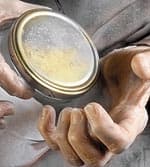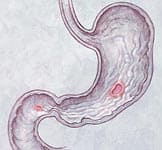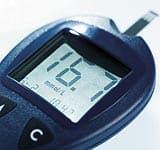Life Extension Magazine®
B Vitamins Lessen Risk of Stroke Recurrence | |
| A combination of B vitamins may help lower the risk of a second stroke, as well as reduce the risk of cardiac events and death, according to a report in the journal Stroke.1 The supplement studied contained vitamins B6, B12, and folic acid, which are known to reduce blood levels of homocysteine, a risk factor for cardiovascular disease. Led by Dr. David J. Spence, scientists from the Stroke Prevention and Atherosclerosis Research Center (Ontario, Canada) conducted an efficacy analysis of data from the Vitamin Intervention for Stroke Prevention (VISP) trial.1 A 2004 report from the VISP study group had reported that combined B vitamin therapy modestly lowered homocysteine levels, but did not reduce the risk of stroke recurrence, cardiac events, or death.2 When Dr. Spence and colleagues re-analyzed the results of the VISP trial, however, a different picture emerged. Noting that the trial included patients who were unlikely to respond to treatment due to existing vitamin B12 deficiency or renal failure, Spence’s group re-examined the results in a subgroup of 2,155 subjects deemed most likely to respond to treatment.1 In this group, combination B vitamin therapy demonstrated benefits in preventing recurrence of stroke and cardiac events.1 Specifically, a higher-dose B vitamin combination (25 mg of B6, 0.4 mg of B12, and 2.5 mg of folic acid) reduced the risk of recurrent stroke, death, and heart disease by 21% compared to a lower-dose B vitamin supplement (0.2 mg of B6, 0.006 mg of B12, and 0.02 mg of folic acid). When the researchers subdivided the patients by baseline levels of B12, thus identifying patients with difficulties absorbing the vitamin, the differences between the high- and low-dose groups further widened. Individuals with baseline B12 levels at or above average who received the higher-dose supplement had the best overall outcomes; those with below-average baseline B12 levels who received the lower-dose supplement had the worst outcomes.1 Dr. Spence noted that while folate fortification of foods is widespread, vitamin B12 status varies widely among patients, and patients’ response to vitamin therapy for lowering homocysteine may largely depend on B12 levels. Higher doses of vitamin B12 or other measures may be necessary to adequately lower homocysteine levels and thus to reduce the risk of stroke, cardiac events, and death.1 Life Extension has long contended that higher doses of B6 (100 to 1000 mg/day) are needed to achieve optimal homocysteine-lowering effects. —Elizabeth Wagner, ND | |
| Reference | |
| 1. Spence JD, Bang H, Chambless LE, Stampfer MJ. Vitamin Intervention For Stroke Prevention trial: an efficacy analysis. Stroke. 2005 Nov;36(11):2404-9. | |
Ginseng Reduces Incidence, Severity of Colds | |
Daily use of ginseng extract helps prevent and reduce the severity of colds in adults, according to Canadian researchers.* Upper respiratory infection is the most frequent health complaint leading individuals to seek medical care. While herbal medicine practitioners have long recommended ginseng as an energy tonic and immune booster, data from a randomized, double-blind, placebo-controlled trial add further support to ginseng’s role in supporting immune health. Researchers enrolled 323 participants between the ages of 18 and 65 with a history of at least two colds in the previous year. Beginning at the onset of influenza season, the participants consumed two 200-mg capsules daily containing either North American ginseng extract (Panax quinquefolius) or placebo. The subjects kept logs of their symptoms, including runny nose, fever, headache, and sore throat, and ranked symptom severity on a scale from zero to three. During the four-month study, the ginseng-supplemented group experienced 25% fewer colds and 56% fewer recurrent colds than the placebo group. Specifically, the ginseng group reported an average of 0.63 colds, compared with 0.93 colds in the placebo group. Only 10% of the ginseng group experienced two or more colds during the study, compared to 23% of the placebo group. When individuals taking ginseng did succumb to colds, their symptoms were less severe and of shorter duration. Those using ginseng reported symptoms that were 31% less severe than those reported by the placebo group. The ginseng group also reported colds that were 34%, or 2.4 days, shorter in duration than those reported by the placebo group. This effect is comparable to that induced by common anti-viral drugs, which typically shorten the duration of illness by 1.5-2.5 days. The use of American ginseng was not associated with any side effects. The researchers believe that bioactive components of ginseng may support immune function by stimulating the production of immunoglobulin, a type of protein that neutralizes foreign invaders in the body such as viruses and bacteria. The authors concluded that North American ginseng extract “appears to be an attractive natural prophylactic treatment for upper respiratory infections.” —Elizabeth Wagner, ND | |
| Reference | |
| * Predy GN, Goel V, Lovlin R, Donner A, Stitt L, Basu TK. Efficacy of an extract of North American ginseng containing poly-furanosyl-pyranosyl-saccharides for preventing upper respiratory tract infections: a randomized controlled trial. CMAJ. 2005 Oct 25:173(9):1043-8. | |
Ginkgo Biloba May Lower Ovarian Cancer Risk | |
According to research presented at a meeting of the American Association for Cancer Research in October 2005, consuming ginkgo biloba is associated with a 60% lower risk of developing ovarian cancer than that experienced by women who did not take the herb.* Researchers led by Drs. Bin Ye and Daniel Cramer of Brigham and Women’s Hospital in Boston examined data from 600 women with ovarian cancer and 640 healthy matched controls. Ten percent of the women with cancer reported using herbal supplements at least once a week for six months or longer prior to their diagnosis, which was comparable to the number of healthy women who reported herbal supplement use. Of the most commonly used herbs, only ginkgo was associated with a lower risk of ovarian cancer. More than 4% of the healthy women reported using ginkgo, compared to 1.6% of those with ovarian cancer. Among women who had nonmucinous ovarian cancers, ginkgo use for six months or longer was associated with a 65-70% risk reduction. In-vitro investigation found that specific compounds in ginkgo stop the growth of ovarian cancer cells. Dr. Ye explained, “Among the mixture of ginkgo chemicals, we found laboratory evidence that ginkgolide A and B-terpene compounds are the most active components contributing to this protective effect. While the detailed mechanism of ginkgo action on ovarian cancer cells is not yet well understood, from the existing literature it is most likely that ginkgo and ginkgolides are involved in anti-inflammation and anti-angiogenesis processes via many extra- and intra-cellular signal pathways. In the future, these findings could potentially offer a new strategy for ovarian cancer prevention and therapy, using the active forms of ginkgolides.” —Dayna Dye | |
| Reference | |
| * Available at: http://www.nutraingredients.com/ news-by-product/news.asp?id=63649&k= ginkgo-biloba-may. Accessed November 9, 2005. |






